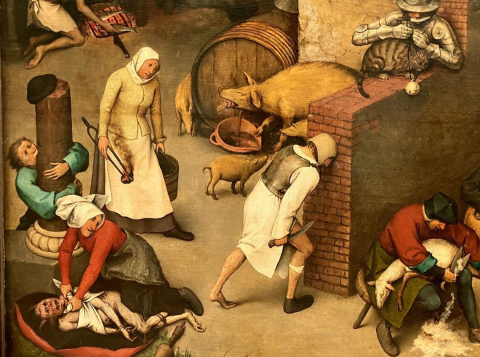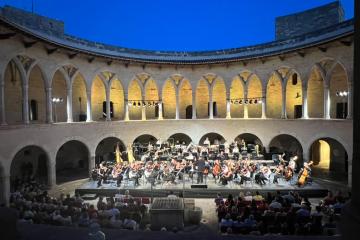After careful thought, we will be discontinuing the Music Monthly newsletter.
Popular wisdom
Popular wisdom
1 Sep 2020
Popular Wisdom by Jeni Fraser
“Birds of a feather flock together.” “When the cat’s away, the mice will play.” We all know and love these common proverbs. Sometimes ironic, often silly and amusing, these sayings test our brains—and our wit. And it is not just in English. Playing with language in literature, conversation, and art has been a hallmark of different cultures for centuries.
With this in mind, over 450 years ago, Dutch master Pieter Bruegel the Elder painted his incredible Netherlandish Proverbs. Also known as The Dutch Proverbs, this painting is a detailed masterpiece that visually represents over 100 Dutch proverbs. Bruegel is known for his elaborately detailed work, and what seems at first like a simple village scene with a wide cast of characters, is soon revealed to be something more.
The Netherlandish language of Bruegel's time was even richer in proverbs than it is today, and Netherlanders have always been fond of such repositories of human wisdom. Proverbs have a way of unmasking human folly, and the Dutch humanist and scholar, Erasmus, was magnetically drawn to this aspect of them as Bruegel was to be.
Several of the proverbs represented in the Berlin picture have disappeared from usage; others are ambivalent; others again may intrigue us primarily because they have no clear English equivalent. One has to know, for example, that, in the lower centre, she who puts a blue hood over her husband makes him a cuckold which might translate as pulling the wool over someone’s eyes; and (just below the hooded figure) ‘locking the barn door after the horse has bolted’ is represented as a man filling in a pond after the calf has downed in it!
Bruegel has hidden his proverbs in both buildings and the landscape in ways that are sometimes grotesque, but always highly imaginative. The man on the battlements of the Tower holding his coat in the breeze symbolises the proverb to 'know where the wind is coming from' and the figure next to him 'shakes feathers out in the window' which means that all his efforts have been in vain. The woman who 'watches the storks' is wasting time, while the man falling 'from an ox onto a donkey' is experiencing business setbacks. The man who 'bites into a pillar' is a hypocrite, and the man who opens his mouth wider than an oven door, is overestimating his abilities.
Some of the sayings in the picture are still in use today, including “big fish eat little fish”;” banging one's head against a brick wall”; and “armed to the teeth”.
To discover them all – and the modern equivalent – a company has created an interactive map of the proverbs. Click on the link
and then close the first page (click on the X at top right) to reveal the painting - the proverbs are indicated by a pulsing circle.
Illustration: The Netherlandish Proverbs. Pieter Bruegel the Elder. 1559. Oil on wood. 163 x 117 cm. Gemäldegalerie, Staatliche Museen zu Berlin.
About the Author
Jeni Fraser
JOIN OUR MAILING LIST
Become an instant expert!
Find out more about the arts by becoming a Supporter of The Arts Society.
For just £20 a year you will receive invitations to exclusive member events and courses, special offers and concessions, our regular newsletter and our beautiful arts magazine, full of news, views, events and artist profiles.
FIND YOUR NEAREST SOCIETY
MORE FEATURES
More than twenty members of our Arts Society flew out in October 2025 for a short but fascinating trip discovering th
Year in Review: A Remarkable Year for The Arts Society Mallorca





